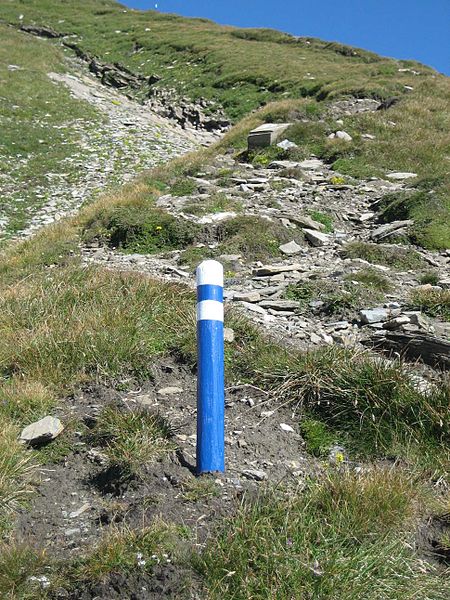An alpine route or high alpine route is a trail or climbing route through difficult terrain in high mountains such as the Alps, sometimes with no obvious path. In the Alps, the various alpine clubs define and mark an alpine route, also called alpinweg or alpinwanderweg. More generally, the term is used for routes of crossing the Alps, such as Roman crossings and Napoleon crossing the Alps. It is also used to describe routes in other mountains with alpine conditions.
Sign on the alpine route at Piz Uccello, Switzerland
Swiss signs: hiking trails in yellow, mountain path in white-red-white, Alpine Route in white-blue-white
Warning marking of Alpine routes by the Alpine clubs
Cairn on the Treffauer
A climbing route is a path by which a climber reaches the top of a mountain, or rock/ice-covered obstacle. The details of a climbing route are recorded in a climbing guidebook and/or in an online climbing route database, and will include elements such as the type of climbing route, the difficulty grade of the route–and beta on its crux(es)–and any risk or commitment grade, the length and number of pitches of the route, and the climbing equipment needed to complete the route.
North face of the Eiger: The original 1938 Heckmair Route (blue-line #2), contrasts with the 1966 Harlin Direttissima (pink-line #3), and the 1969 Japanese Direttissima (pink-line #6). Not shown is the 2006 Russian Direttissima which is an almost straight vertical line between the Harlin and Japanese routes.
In-situ sport climbing protection showing a rope clipped into a quickdraw, that is clipped into a permanently fixed climbing bolt.






